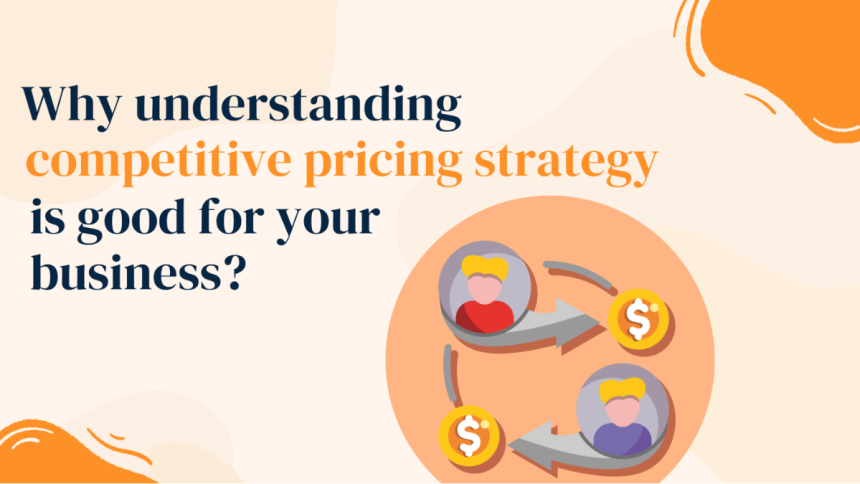Pricing is no longer about numbers. It’s turned into a strategic signal. It says who you are, how you position yourself in the market, and why customers should care. When done right, it can be your strongest lever for growth. Done wrong, it can quietly drain your profits while your competitors smile all the way to the bank. Now, there are several strategies to get your pricing right, like cost-plus pricing, value-based pricing, and dynamic pricing, but nothing comes close to Competitive Pricing, as far as ease of adoption and efficacy are concerned.
What is Competitive Pricing?
It is a pricing strategy where you set the price of your products or services based on what your competitors are charging. The approach leverages publicly available prices of rival products to ensure your products stay relevant and attractive in the market.
At its core, competitive pricing is about positioning. This price competition strategy focuses on how you want to stand in comparison to others, whether that means offering the lowest price, matching the average market price, or staying just below the premium players.
Why Understanding Competitive Pricing Strategy is Good for Your Business?
There are five key reasons to adopt a competitive pricing strategy for your business. Here are they:
#1 Attracts More Customers
Today’s consumers are highly informed. They’re familiar with standard price points in your industry and come with well-formed expectations of value. With competitor prices readily available online, they can quickly assess how your offering stacks up. All this means when you use competitor-based pricing, you’re speaking a language your customers essentially understand. It makes your offering more approachable (especially for first-time buyers) and signals that your business understands market trends and is willing to compete fairly.
💡 Pro Tip: Introduce price-match guarantees like Best Buy. Let your customers know that if they find a lower price elsewhere, you’ll match or refund the difference. This builds trust and attracts even more customers to your brand.
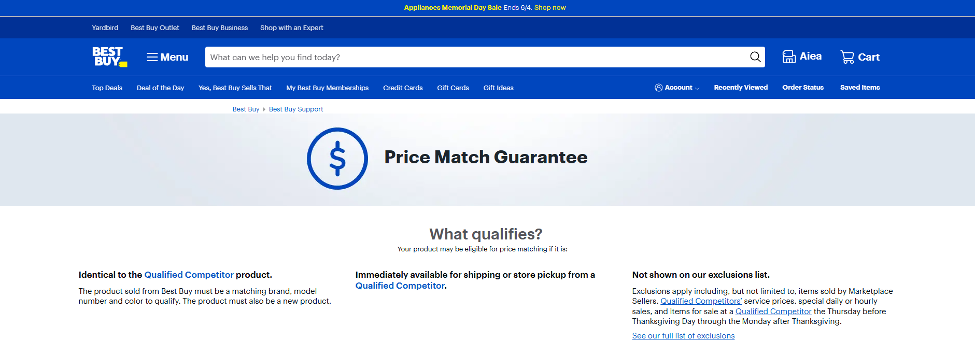
#2 Builds Loyalty
Competitive pricing not only attracts new customers but also helps build long-term loyalty. When your pricing is equal to or better than your competitors, it can encourage consumers to switch and stick with your brand. By monitoring your competitors’ price movements and responding strategically, you show customers that you value their money more than anything else. Over time, consistently well-priced products combined with a clear understanding of customer expectations make it easy to nurture loyalty.
Amazon is a prime example of how competitive pricing can build long-term customer loyalty. The platform constantly monitors competitors’ prices and adjusts its own listings to either match or undercut them. For instance, for the below product, Amazon has ensured that it matches the lowest price in the market, which was offered by Walmart.
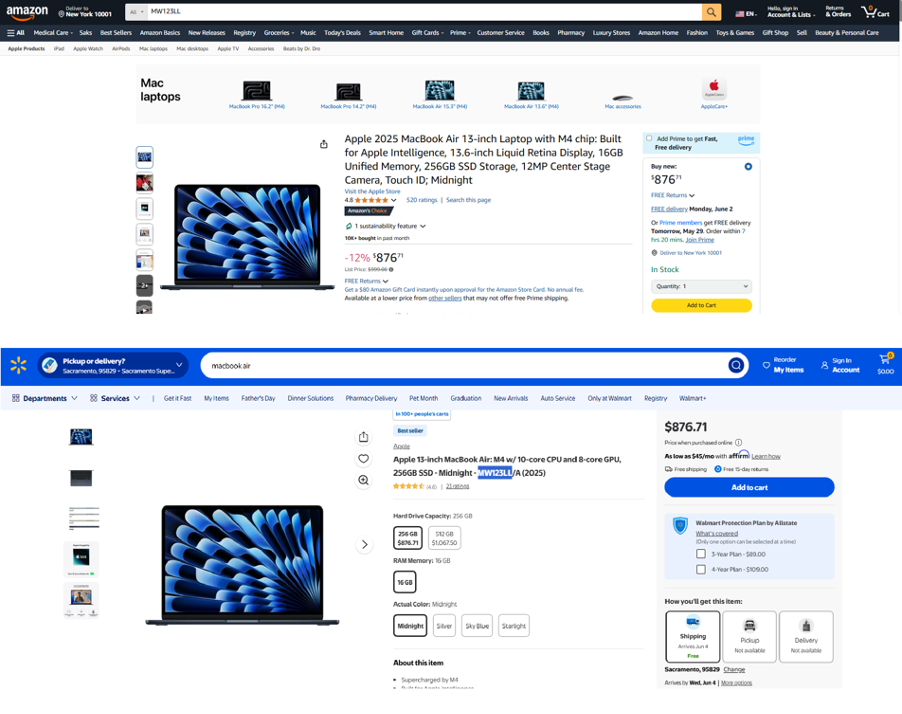
Customers notice these small things and begin to trust that Amazon offers the best deal most of the time.
#3 Drives Brand Awareness
When customers find that a brand is pricing their products fairly, they’re more likely to share their experience with friends, family, or on social media, even without being prompted. This kind of organic word-of-mouth promotion helps your brand reach new audiences and builds trust faster than traditional advertising.
As more people hear about your best-priced products, your customer base expands, and your brand gains visibility in a crowded market. Competitive pricing, in this way, becomes a powerful tool for increasing both engagement and recognition.
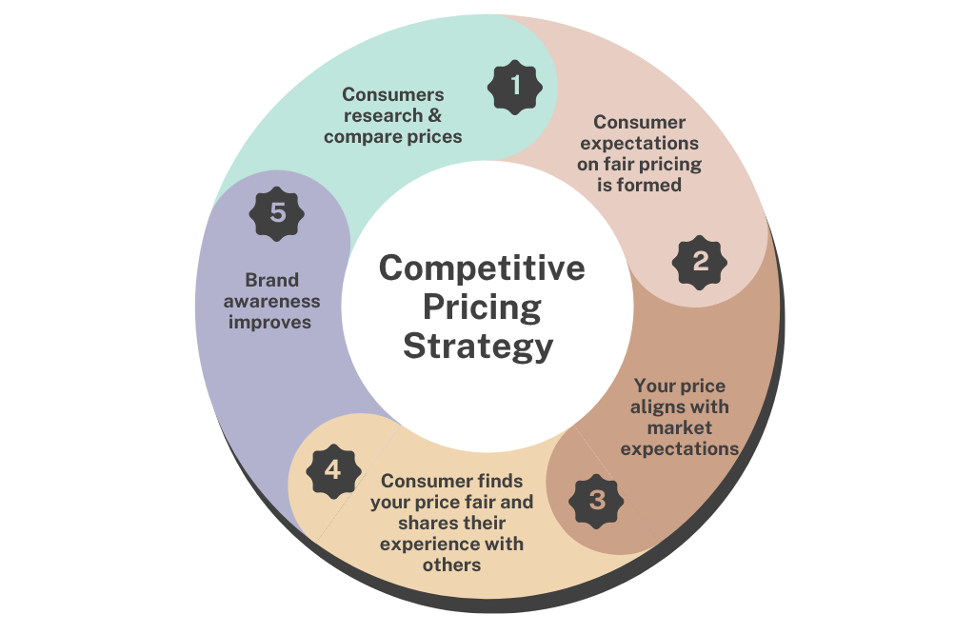
💡 Pro Tip: Promote “best price” wins across channels. Whenever your pricing undercuts the competition, highlight it in your ads, product pages, and social media with badges like “Lowest Price Online”.
#4 Helps Understand Market Position
By regularly analyzing your competitors’ pricing and adjusting your own, you gain a clearer picture of where your brand stands in terms of value perception and demand. It helps you identify whether you’re seen as a budget-friendly option, a mid-range alternative, or a premium offering. This awareness allows you to refine your branding and marketing strategies accordingly. Competitive pricing strategy is a continuous feedback loop that helps you stay ahead in the market.
Take the case of Target competing with Walmart in everyday household essentials. Walmart is known for rock-bottom prices, so Target used to closely monitor those price points and price their own products accordingly. Over time, Target realized that while customers appreciated competitive pricing, they also valued a better shopping experience and product design. By pricing products close to Walmart but emphasizing quality, store aesthetics, and exclusive brands like Up & Up and Good & Gather, Target identified its market position as a more stylish yet affordable alternative to Walmart.
💡 Pro Tip: Conduct quarterly pricing audits with customer interviews or surveys.
Ask your customers where they think your brand stands in terms of value for money compared to others. This qualitative insight, paired with price benchmarking, gives sharper clarity on your perceived market position.
#5 Very Easy to Implement
One of the biggest advantages of competitive pricing is its simplicity. Unlike value-based or dynamic pricing strategies that require deep customer data or algorithmic adjustments, competitor-based pricing relies on publicly available market information. You can easily review what similar products or services are priced at and position your products accordingly. It could be either slightly above to highlight premium quality or slightly below to appeal to price-sensitive buyers.
Here is an illustration depicting the ease of implementing a competitive pricing strategy:
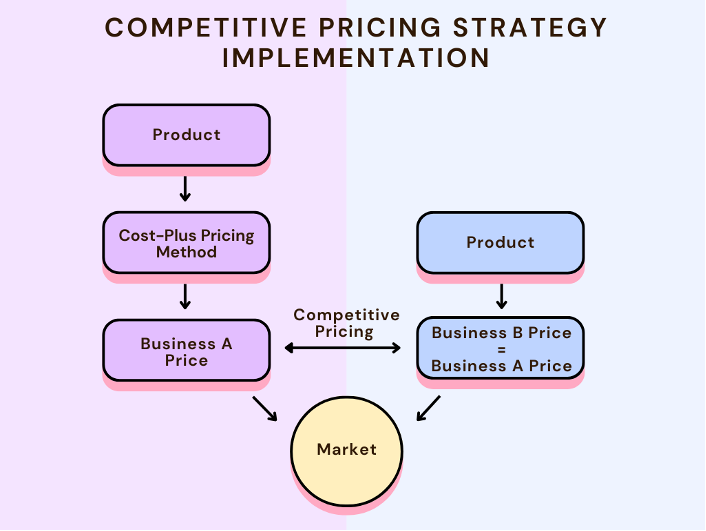
Wrap Up
Understanding competitive pricing isn’t just about matching or beating your rivals, it’s about learning what your competitors are doing, how customers are responding, and gaining valuable insights that go beyond price tags. You start to understand what your market values and where you can differentiate. Put simply; it becomes a lens through which you grow more strategically. If you partner with tech platform like Anakin, who provides white glow platform deployment, it helps you get precise data for your problem.
Lynn Martelli is an editor at Readability. She received her MFA in Creative Writing from Antioch University and has worked as an editor for over 10 years. Lynn has edited a wide variety of books, including fiction, non-fiction, memoirs, and more. In her free time, Lynn enjoys reading, writing, and spending time with her family and friends.


